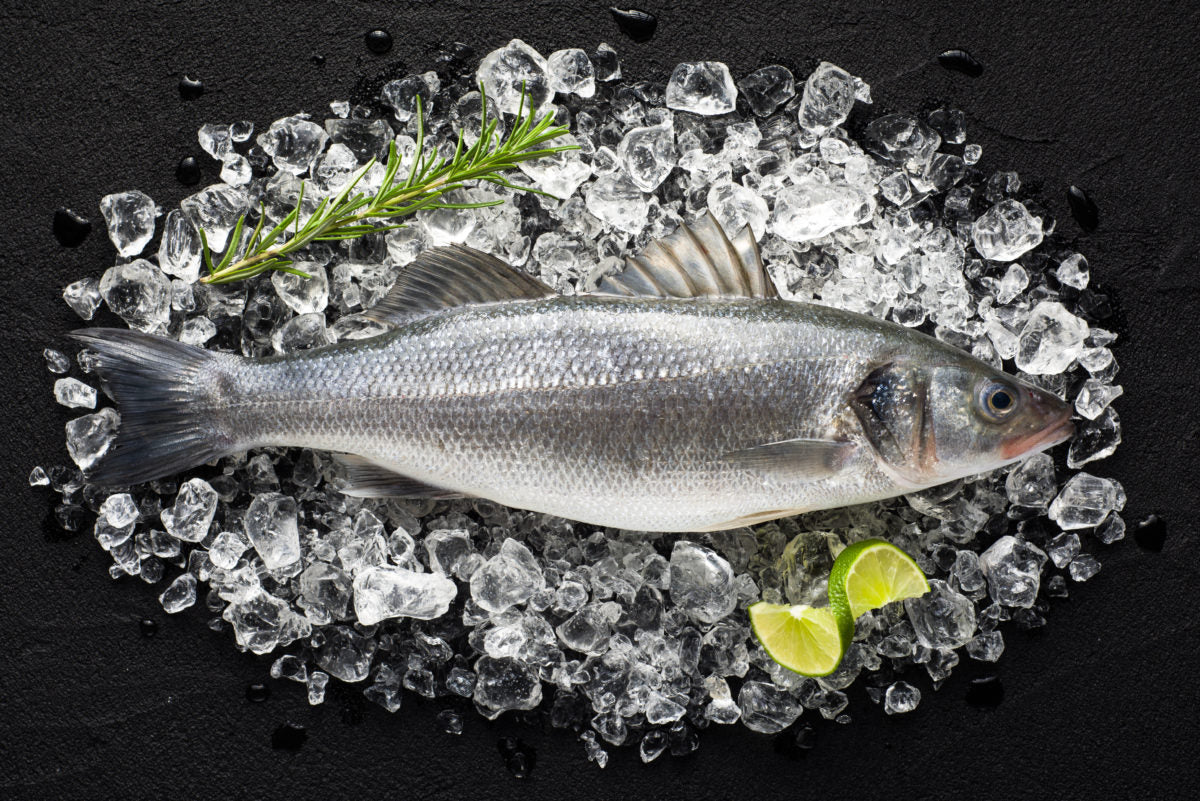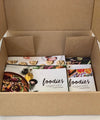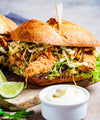Blog Menu
Recent Post

Australian Seafood - How to choose sustainable & local
Kate Willbourn
Prawns, Crab & Salmon are all great for an Easter feast, but do you know where your seafood comes from?
Shocking, but sadly true, the majority of the seafood Australian's eat is imported.
Whilst Australia is unique in the fact that the seafood we produce could actually meet our own supply & demand, we export high volumes due to price.
 So you're buying local, AMAZING! Now there is the the question of sustainability. Some species of fish are being overfished, have negative environmental impact and or damaging bycatch issues. So choosing sustainable seafood is the only way forward for a flourishing, healthy seafood industry.
It may not be as obvious to work out if a certain species of fish is sustainable or not, however there are a few amazing organisations who are doing all the hard work for us. In particular, the Marine Stewardship Council is the world’s most credible and robust certification standard for sustainability. It does DNA checks to trace seafood along supply chains to ensure products are being labelled accurately and not mixed with other unsustainable sources.
SO HOW CAN YOU MAKE BETTER, SUSTAINABLE CHOICES?
So you're buying local, AMAZING! Now there is the the question of sustainability. Some species of fish are being overfished, have negative environmental impact and or damaging bycatch issues. So choosing sustainable seafood is the only way forward for a flourishing, healthy seafood industry.
It may not be as obvious to work out if a certain species of fish is sustainable or not, however there are a few amazing organisations who are doing all the hard work for us. In particular, the Marine Stewardship Council is the world’s most credible and robust certification standard for sustainability. It does DNA checks to trace seafood along supply chains to ensure products are being labelled accurately and not mixed with other unsustainable sources.
SO HOW CAN YOU MAKE BETTER, SUSTAINABLE CHOICES?
 Lastly, labelling laws in Australia are sadly weak compared to say Europe. As consumers, we deserve clearer labels to make more informed buying decisions. Join the petition 'Label My Fish' led by Matthew Evans and supported by Greenpeace, Australian Marine Conservation Society and celebrities like Sarah Wilson, Peter Gilmore and Frank Camorra to hopefully enforce change sooner rather than later.
Try THIS delicious Australian Seafood recipe from one of our local food heroes.
Sources : Australian Agricultural 2013 / Australian Marine Conservation Society / Greenpeace
Lastly, labelling laws in Australia are sadly weak compared to say Europe. As consumers, we deserve clearer labels to make more informed buying decisions. Join the petition 'Label My Fish' led by Matthew Evans and supported by Greenpeace, Australian Marine Conservation Society and celebrities like Sarah Wilson, Peter Gilmore and Frank Camorra to hopefully enforce change sooner rather than later.
Try THIS delicious Australian Seafood recipe from one of our local food heroes.
Sources : Australian Agricultural 2013 / Australian Marine Conservation Society / Greenpeace
- Try to shop at your local fishmonger vs larger supermarket chains
- Ask lots of questions - be curious and interested in the seafood you eat
- When eating out or ordering takeaway in, ask them if they use Australian seafood? The more of us that ask, the more pressure these establishments will feel to source local.
- Read labels
- Some great Australian choices are: Australian Barramundi, Sydney Rock & Pacific Oysters, King George Whiting, Southern calamari, Australian Flathead, Australian Salmon, Spanner Crabs, Mud Crabs, Banana Prawns.
 So you're buying local, AMAZING! Now there is the the question of sustainability. Some species of fish are being overfished, have negative environmental impact and or damaging bycatch issues. So choosing sustainable seafood is the only way forward for a flourishing, healthy seafood industry.
It may not be as obvious to work out if a certain species of fish is sustainable or not, however there are a few amazing organisations who are doing all the hard work for us. In particular, the Marine Stewardship Council is the world’s most credible and robust certification standard for sustainability. It does DNA checks to trace seafood along supply chains to ensure products are being labelled accurately and not mixed with other unsustainable sources.
SO HOW CAN YOU MAKE BETTER, SUSTAINABLE CHOICES?
So you're buying local, AMAZING! Now there is the the question of sustainability. Some species of fish are being overfished, have negative environmental impact and or damaging bycatch issues. So choosing sustainable seafood is the only way forward for a flourishing, healthy seafood industry.
It may not be as obvious to work out if a certain species of fish is sustainable or not, however there are a few amazing organisations who are doing all the hard work for us. In particular, the Marine Stewardship Council is the world’s most credible and robust certification standard for sustainability. It does DNA checks to trace seafood along supply chains to ensure products are being labelled accurately and not mixed with other unsustainable sources.
SO HOW CAN YOU MAKE BETTER, SUSTAINABLE CHOICES?
- Look out for the Marina Stewardship Council blue tick
- Refer to the helpful canned tuna guide from Greenpeace
- Quick search on Australia's Sustainable seafood guide
- Download the super helpful mini guide to keep in your shopping bag or wallet
- Refer to the Greenpeace Good Prawn - Dodgy Prawn guide
- Mix it up - don't buy the same species of fish all the time
 Lastly, labelling laws in Australia are sadly weak compared to say Europe. As consumers, we deserve clearer labels to make more informed buying decisions. Join the petition 'Label My Fish' led by Matthew Evans and supported by Greenpeace, Australian Marine Conservation Society and celebrities like Sarah Wilson, Peter Gilmore and Frank Camorra to hopefully enforce change sooner rather than later.
Try THIS delicious Australian Seafood recipe from one of our local food heroes.
Sources : Australian Agricultural 2013 / Australian Marine Conservation Society / Greenpeace
Lastly, labelling laws in Australia are sadly weak compared to say Europe. As consumers, we deserve clearer labels to make more informed buying decisions. Join the petition 'Label My Fish' led by Matthew Evans and supported by Greenpeace, Australian Marine Conservation Society and celebrities like Sarah Wilson, Peter Gilmore and Frank Camorra to hopefully enforce change sooner rather than later.
Try THIS delicious Australian Seafood recipe from one of our local food heroes.
Sources : Australian Agricultural 2013 / Australian Marine Conservation Society / Greenpeace
← Older Post Newer Post →



